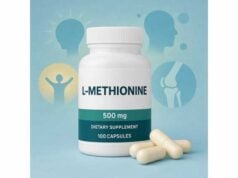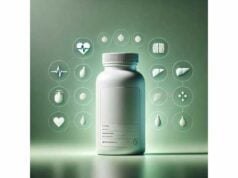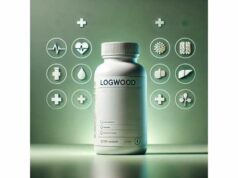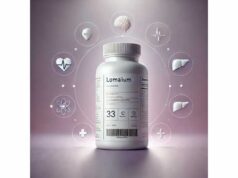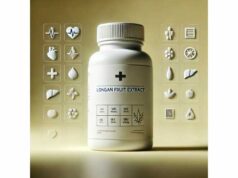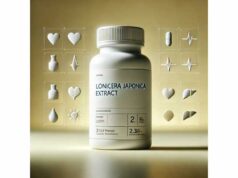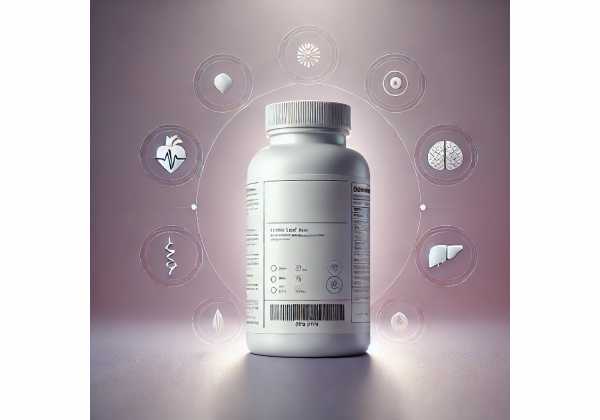
Lotus leaf extract (from Nelumbo nucifera leaves) has a long culinary and herbal history across Asia and is increasingly used in modern wellness formulas aimed at weight management, lipid balance, metabolic health, and antioxidant support. Early human trials suggest modest reductions in body fat and improvements in waist measures over 8–12 weeks, while a larger body of animal and cell studies points to effects on fat metabolism, gut microbes, and liver fat handling. The extract is rich in alkaloids such as nuciferine, plus flavonoids like quercetin-3-glucuronide, which may help regulate appetite cues, lipid synthesis, and thermogenesis. Practical forms include capsules, teas, and standardized extracts. This guide explains how lotus leaf extract may work, who it might help, how to use it safely, and where the evidence is strongest—so you can decide if it belongs in your routine.
Quick Overview
- May support modest body fat reduction and waist size over 8–12 weeks; possible improvements in lipids.
- Typical supplemental range: 300–600 mg standardized leaf extract once or twice daily; tea: 2–3 g dried leaf per cup.
- Common side effects are mild (GI upset, nausea); avoid if pregnant, breastfeeding, or with liver disease unless supervised.
- People with significant liver conditions, those on hepatotoxic drugs, anticoagulants, or blood pressure medications should avoid unless cleared by a clinician.
Table of Contents
- What is lotus leaf extract?
- Does it work and what are the benefits?
- How to use lotus leaf extract
- How much to take and for how long
- Safety, side effects, and who should avoid it
- What the evidence says: strengths and gaps
What is lotus leaf extract?
Lotus leaf extract is a concentrated preparation made from the leaves of the sacred lotus (Nelumbo nucifera). Unlike lotus root or seeds—popular foods in many cuisines—the leaf is typically processed for teas and supplements. The extract contains several bioactive families:
- Aporphine alkaloids, most notably nuciferine, an alkaloid investigated for effects on lipid handling, insulin secretion, vascular tone, and nervous-system receptors.
- Flavonoids such as quercetin-3-glucuronide, kaempferol, and related glycosides with antioxidant and anti-inflammatory properties.
- Phenolics and tannins that may influence digestive enzymes and bile acid metabolism.
How it may work. Research suggests multiple complementary mechanisms:
- Fat metabolism: Lotus leaf constituents appear to downregulate enzymes that build fatty acids (like FAS and SREBP-1c) and may upregulate pathways that burn fat (AMPK, PGC-1α, UCP1 signaling in brown adipose tissue). In plain language, the leaf seems to nudge the body toward burning, rather than storing, fat.
- Gut-liver axis: Animal studies show shifts in gut microbiota composition that track with improvements in cholesterol, triglycerides, and inflammatory tone, which can feed forward to liver fat and insulin sensitivity.
- Digestive effects: Some compounds mildly inhibit pancreatic lipase and carbohydrate-digesting enzymes. This may modestly reduce fat absorption or post-meal glucose excursions for certain users.
- Vascular and metabolic signaling: Nuciferine and related alkaloids have been studied for vasodilation and blood pressure effects in preclinical models, which might indirectly support cardiometabolic health.
What makes lotus leaf different? Many “fat-burning” botanicals rely mostly on stimulant effects (e.g., caffeine). Lotus leaf is non-stimulant and acts primarily through metabolic and gut-liver pathways, making it a candidate for people who avoid stimulants.
Forms you’ll see.
- Standardized capsules or tablets (often labeled with a nuciferine or total flavonoids percentage).
- Tea/tisanes from dried or cut leaf.
- Blends combining lotus leaf with green tea, L-carnitine, or other botanicals (these can complicate safety and attribution of effects).
Quality considerations. Look for products that specify plant part (leaf), extraction ratio or solvent (e.g., 10:1, ethanol/water), and standardization markers (e.g., ≥1% nuciferine, or defined total flavonoids). Third-party testing for contaminants (heavy metals, microbes) is a plus, especially because aquatic plants can bioaccumulate metals depending on where they grow.
Does it work and what are the benefits?
Weight management (modest but meaningful). In a randomized, double-blind 12-week human trial with overweight adults, a standardized lotus leaf extract was associated with reductions in total body fat and, in men, visceral fat and waist circumference compared with a non-intervention control. While the effect size was not dramatic, the direction was consistent and clinically relevant for people aiming at gradual, sustainable change. A smaller 8-week student trial using a composite of potato and lotus leaf suggested a drop in total cholesterol with trends toward improved body composition—though the blend and small sample limit conclusions.
Lipid profile and liver fat. Multiple preclinical studies show the leaf extract can reduce weight gain and improve cholesterol and triglycerides, sometimes rivaling orlistat in animal comparisons. There’s also evidence of reduced hepatic steatosis (fatty liver) and improved liver histology alongside changes in inflammatory cytokines (lower TNF-α/IL-6, higher IL-10). In practical terms, users sometimes notice improvements in fasting lipids after several weeks if diet and movement stay consistent.
Glycemic and insulin dynamics. In high-fat diet models, lotus leaf has improved insulin resistance (lower fasting insulin, improved HOMA-IR), likely via AMPK activation and microbe-mediated effects on short-chain fatty acid production. Human outcomes here are still sparse; any glucose benefits should be viewed as possible but unproven.
Antioxidant and anti-inflammatory support. Flavonoid-rich extracts demonstrate antioxidant capacity and reductions in inflammatory markers in preclinical work. This could be a supportive mechanism rather than a direct, subjective “feeling,” but it matters in the bigger cardiometabolic picture.
Appetite and digestive comfort. Some users report slightly reduced appetite or feelings of lightness after meals. Mechanistically, mild lipase/carbohydrase inhibition and effects on gut peptides may contribute. Expect subtlety rather than a dramatic stimulant-like suppression.
Who tends to benefit most?
- Adults with overweight and central adiposity who are already pursuing nutrition and activity changes and want an additional 5–10% nudge over 2–3 months.
- Individuals with borderline-elevated cholesterol or triglycerides who prefer a non-stimulant botanical adjunct (after clinician approval).
- Those who don’t tolerate caffeine but still want a metabolism-focused botanical strategy.
Who might benefit less? People seeking rapid weight loss, those with normal body fat, or those unwilling to pair supplementation with consistent diet and movement.
How fast are effects seen? In human trials, body composition changes emerged over 8–12 weeks; preclinical improvements often appear within 4–6 weeks. Plan accordingly and measure progress with waist, photos, or body fat assessments rather than scale weight alone.
How to use lotus leaf extract
Pick a form that fits your routine.
- Capsules or tablets (standardized extract): Best for consistency and research-aligned dosing. Choose products that disclose extraction method and standardization.
- Tea/tisane (cut leaf): Suits those who enjoy herbal rituals. Good for light daily use or as a caffeine-free alternative to green tea.
- Powders: Flexible for smoothies; check taste (leaf is mildly bitter/green).
Timing tips.
- Many users take the extract with meals rich in fat or carbohydrates to align with digestive-enzyme effects.
- If using twice daily, breakfast and the main meal are common anchors.
- Avoid late-evening dosing if you notice any digestive stimulation.
Stacking thoughtfully (optional).
- With fiber (psyllium, glucomannan): May enhance satiety and cholesterol effects. Separate by 1–2 hours to avoid interference with absorption of medications.
- With protein at meals: Supports satiety and preserves lean mass during weight loss.
- With metabolic allies: Non-stimulant options include berberine (for glucose control) or artichoke extract (for bile flow and lipids). Introduce one change at a time to pinpoint what helps.
- Be cautious with stimulant stacks (caffeine, synephrine): lotus leaf is non-stimulant; adding stimulants shifts the risk/benefit profile.
Practical weekly plan (example).
- Weeks 1–2 (intro): 300 mg standardized extract once daily with your largest meal; track waist, energy, digestion.
- Weeks 3–8: Increase to 300–600 mg twice daily if tolerated and desired; hold steady diet and movement targets.
- Weeks 9–12: Continue if you’re progressing; reassess lipids or body comp at week 12.
- After 12 weeks: Take a 2–4 week break or step down to maintenance (once daily) to reassess need and tolerance.
For tea drinkers.
- Steep 2–3 g dried leaf in hot water for 6–10 minutes; drink 1–2 cups daily.
- For a milder effect, blend with peppermint or lemongrass to soften bitterness.
Measurement matters. Because weight fluctuates, rely on waist circumference, progress photos, and if available, body composition (DEXA or bioimpedance) every 4–6 weeks.
Lifestyle foundations (non-negotiable).
- Protein target: 1.2–1.6 g/kg/day to maintain lean mass.
- Fiber: ≥25–35 g/day from plants.
- Movement: 150+ minutes/week mixed cardio and resistance training.
- Sleep: 7–9 hours for appetite and insulin regulation.
How much to take and for how long
Adults (standardized extract).
- Common range: 300–600 mg standardized lotus leaf extract once or twice daily with meals.
- If your product lists nuciferine standardization (e.g., ≥1% nuciferine), start at the lower end and titrate based on tolerance.
- For blends (e.g., with green tea or L-carnitine), follow the product’s serving size; be aware blends can alter both efficacy and side-effect profiles.
Tea/tisane.
- 2–3 g dried leaf per cup; 1–2 cups/day is typical. Tea delivers a broader, lighter spectrum of compounds and a lower nuciferine dose than standardized capsules.
Duration.
- Evidence-supported windows are 8–12 weeks for meaningful body-composition and lipid changes. Many users reassess at 12 weeks and either cycle off for 2–4 weeks or continue at a maintenance dose if still progressing and tolerating well.
Body weight and sensitivity adjustments.
- Lower body weight or higher sensitivity: start at 300 mg once daily.
- Higher body weight or resistant lipids: consider 600 mg twice daily, monitoring digestion and any liver-related symptoms.
When to reduce or stop.
- New or worsening abdominal pain, dark urine, yellowing of eyes/skin, unusual fatigue, or itching may indicate liver stress—stop and contact a clinician.
- Significant dizziness, palpitations, or drop in blood pressure (rare) warrant discontinuation and medical advice.
- If you start new medications with narrow therapeutic windows (anticoagulants, antiarrhythmics), pause until cleared by your prescriber.
Special populations.
- Pregnant or breastfeeding: avoid due to insufficient safety data.
- Adolescents: avoid unless advised by a pediatric specialist.
- Chronic liver or kidney disease: avoid self-experimentation; get clinician supervision and baseline labs.
How to read labels.
- Prefer products that state: plant part (leaf), extraction ratio (e.g., 10:1), solvent (water/ethanol), and standardization marker.
- Third-party certifications (NSF, USP, Informed Choice) add confidence.
- Avoid proprietary blends that hide exact milligram amounts when possible.
Safety, side effects, and who should avoid it
What users most often notice.
- Mild GI effects: nausea, bloating, or loose stools—often meal-dependent and dose-related.
- Taste/tea issues: bitterness or mild astringency; blending with other herbs can help.
Less common considerations.
- Liver precautions: An older case report linked a commercial slimming product (“Lotus-f3”) to reversible hepatitis; that product also contained green tea extract, a known cause of rare liver injury. While lotus leaf itself is not widely reported to cause liver harm, prudence is warranted: avoid combined stimulant-heavy or multi-extract fat burners, and stop supplementation if you develop liver-related symptoms.
- Blood pressure and vascular tone: Preclinical work suggests nuciferine may influence vasodilation. If you take blood pressure medications or have orthostatic symptoms, monitor carefully.
- Coagulation: Many polyphenol-rich extracts can interact with platelet function or vitamin K pathways; if you take anticoagulants/antiplatelets, consult your prescriber and avoid starting without approval.
- Allergies: Rare but possible. Discontinue at the first sign of hives, wheeze, or throat tightness.
Drug and condition interactions (caution or avoid).
- Anticoagulants/antiplatelets (e.g., warfarin, apixaban, clopidogrel): potential interaction risk—avoid unless supervised.
- Hepatotoxic medications (e.g., high-dose acetaminophen, certain anti-tuberculars, some antifungals): avoid layering additional hepatic burden.
- Diabetes medications/insulin: theoretical risk of additive glucose lowering; monitor and coordinate dose adjustments with your clinician.
- Pregnancy/breastfeeding: insufficient data—avoid.
- Significant liver disease or prior herb-induced liver injury: avoid unless a specialist is monitoring with baseline and follow-up labs.
Quality and contamination. Because lotus is an aquatic plant, ensure your product comes from suppliers who test for heavy metals (lead, cadmium, arsenic, mercury) and microbial contaminants. Choose brands that publish Certificates of Analysis (COAs).
What to do if you feel unwell.
- Stop the product immediately.
- Note any other supplements/drugs you’re using, especially multi-ingredient fat burners.
- Seek medical advice, and request basic labs if symptoms suggest liver involvement (ALT, AST, ALP, bilirubin).
What the evidence says: strengths and gaps
Where evidence is strongest.
- Body fat and waist outcomes: A randomized, double-blind 12-week trial in overweight adults found reductions in total body fat, with men showing visceral fat and waist improvements. This aligns with the extract’s non-stimulant metabolic mechanisms.
- Lipid metabolism and fatty liver (preclinical): Multiple animal studies demonstrate lower triglycerides and LDL, improved hepatic histology, and better inflammatory profiles, often accompanied by microbiome shifts that favor metabolic health.
- Mechanistic plausibility: Across models, lotus leaf engages AMPK/PGC-1α/UCP1 signaling, β3-adrenergic pathways in brown adipose tissue, and lipase or carbohydrase inhibition. Nuciferine’s pharmacology adds a coherent vascular and metabolic layer.
Where to be cautious.
- Human sample sizes are small. The most informative human studies enroll dozens, not hundreds, and some use blends (e.g., potato + lotus leaf), limiting attribution. Larger, longer trials are needed to pin down effect sizes and ideal candidates.
- Standardization varies. Not all products state nuciferine or flavonoid content, making it hard to translate research dosing 1:1 to retail products.
- Safety surveillance is limited. While serious adverse events appear rare in the literature, case reports of liver injury with multi-ingredient slimming products exist. Until more robust pharmacovigilance is available, avoid stacking with hepatotoxic or stimulant-heavy formulas.
Practical interpretation.
- Expect modest, steady improvements in body composition and possibly lipids over 8–12 weeks, especially when combined with nutrition and activity changes.
- If you want a non-stimulant metabolic adjunct and you tolerate botanicals well, lotus leaf is reasonable to try with informed safeguards and realistic expectations.
- If you need substantial lipid lowering or have fatty liver disease, discuss lotus leaf as a complement (not a replacement) to guideline-supported therapies and lifestyle interventions.
What would strengthen confidence?
- Large randomized trials (>200 participants) comparing standardized lotus leaf to placebo over ≥6 months, with DEXA/CT visceral fat imaging and lipid/glycemic endpoints.
- Head-to-head studies versus common adjuncts (green tea catechins, berberine).
- Dose-ranging studies defining the minimal effective dose and upper tolerable limit for standardized extracts.
- Pharmacokinetics and interaction work for nuciferine, especially with anticoagulants and hepatotoxic drugs.
References
- Fat reducing effects of Nelumbo nucifera leaf extract in overweight patients 2022 (RCT)
- Effects of potato and lotus leaf extract intake on body composition and blood lipid concentration 2015 (RCT)
- Advances in the pharmacological effects and mechanisms of Nelumbo nucifera gaertn. Extract nuciferine 2024 (Review)
- Effects and action mechanisms of lotus leaf (Nelumbo nucifera) ethanol extract on gut microbes and obesity in high-fat diet-fed rats 2023 (Animal Study)
- Hepatitis caused by Lotus-f3? 2009 (Case Report)
Disclaimer
This article provides general information about lotus leaf extract and is not a substitute for personalized medical advice, diagnosis, or treatment. Always speak with your healthcare professional before starting any new supplement, especially if you are pregnant or breastfeeding, have liver or kidney disease, take prescription medications (including anticoagulants or hepatotoxic drugs), or have a history of herb-induced liver injury. Never delay seeking professional advice because of something you have read here.
If you found this guide useful, please consider sharing it on Facebook, X (formerly Twitter), or your favorite platform, and follow us for future evidence-based wellness articles. Your support helps us continue creating high-quality content.

